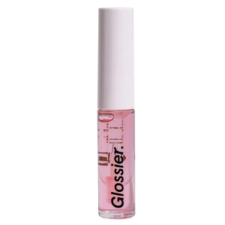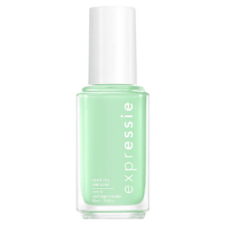I spent years training sales teams how to effectively negotiate & close higher value deals with clients. Here’s how to deal with 2 Common sales-techniques….
Turn these 2 common sales tactics to your favor
Chances are you’ve either dealt with sales people, been a sales person – or like me, been on both sides of the table! Whether you’re making a personal purchase like a new car, appliances for the house or negotiating a purchase on behalf of your company – you want to negotiate the best deal, right! Heck yeah!
I spent years managing and training teams in effective sales and negotiating tactics in order to hit company goals. It was fun! Negotiating is like a puzzle – you have to figure out which pieces, go where. And – ya gotta be a little balls-y. With a smile, of course 😉
One of the keys to getting the best deal, is understanding 2 common tactics used by (some) sales people and just as important – how to negotiate against them to your benefit!
I’ll let you in on a secret…. Just understanding these 2 tactics and knowing how to handle them – saved me over $8,000 between only 2 software contracts last year alone. I was also able to negotiate getting “grandfathered” into an older, but way more advantageous program.
I don’t have some weird superpower – anyone can do it with basic knowledge & a little practice. Now I want to share these methods with you! Here we go…..
Two Common Sales Tactics You May Encounter & How to Handle!
1. False Deadlines: To create a sense-of-urgency
2. Front-Loaded Fees: aka Set-up, Installation, delivery fees, etc.
1. False Deadlines to Create a Sense of Urgency:
This is such an old tactic, but some companies & sales people still use it from time to time. Basically, they set a false deadline for you to make a buying decision or the “special pricing” (or whatever) goes away. This is to create within you, a sense-of-urgency and push you into signing the deal. 99 times out of 100, it’s bullshit.
Here’s the inside scoop:
More than likely – the salesperson is the one feeling the heat with his/her boss to make sales quota. You’ll generally find false deadlines towards the end of a month, quarter or especially – the end of their fiscal year.
I’ll share a typical scenario from my sales life:
Let’s say I’m a salesperson with a monthly sales quota of $5,000. That means I have to close $5,000 worth of business no later than the last day of every month. It is now January 28th and I’m at $3,500 – $1,500 short, with 3 days left in the month.
I am stressed. My sales manager is busting my chops because her quota as a manager, depends upon her sales reps hitting their number. The Regional Director is busting her chops because his regional quota depends on sales managers hitting their number…. You get the pic. It rolls uphill and downhill.
You are my potential new client. I’ve been working with you on a deal worth $2,000. You’re hemming and hawing. I really need you to sign the deal, otherwise I miss quota and shit hits the fan.
After meeting with my sales manager, we discuss 2 potential false-deadline options:
Option 1: Tell you that the special pricing I had offered, expires on January 31st.
Option 2: Offer you better pricing or throw in a nice incentive – only if you sign the deal by the 31st.

Here are 2 Smart Ways Handle False-Deadlines:
+ Use it to your advantage
IF and only IF you’re ready to move forward with the business anyway, turn the tables on them. Use their own false deadline as leverage for a better price or better terms.
It might go like this:
SALESPERSON: “Today is the 28.th The $499 price is only good until the 31st, are you ready to move forward?
YOU: “$499 is more than I had in mind. I’m comfortable in the $325-$350 range.” (Stay quiet! The sales person now knows they’ve got a deal, it’s just a matter of price. Hear them out. You might just get it off the bat.)
SALESPERSON: “I can’t do $350, but I can come down to $425 and throw in a few extras.”
YOU: “$350 is my price……If you can meet the $350, you’ve got yourself a deal.
Why it works:
Remember, sales people usually operate on quotas. That means a big push at months end to close as much business as possible…. As a Sales Director, I was much more likely to cut a good deal the last 2-3 days of the month, than mid-month.
Saying “If you can meet my price, you’ve got a deal,” is like nectar to their ears. They HAVE the deal – you’ve said yes. Now, it’s just a matter of price. NOTE: Don’t fudge! If they meet your price, or at least something you’re happy with – be true to your word. Sign the deal. It’s ethics.
+ Walk away
If you’re truly not ready to move forward for any reason, do not let a false deadline push you into moving forward. Walk away. No one company is ever the only game in town – there are always other options. At the very least, step away and breathe. I can almost guarantee you, they’ll honor the same price or better if you decide to move forward with them at a later date.
2. Front-Loaded Fees: Set-up, Installation, delivery fees, etc.
Front-loaded fees are one-time fees a business will put into a Price Proposal. They’re usually labeled something like: Installation, Set-Up, Delivery, etc. Sometimes they’re no biggie. Other times they’re pretty hefty. One software company wanted $2,500 for “set-up” of the account. Ummm……not happening.
I’m gonna let you in on a secret. We used to call Front-Loaded fees, a fake give. A fake give is something you secretly don’t care about – but include it as an “ask” during negotiations so that you can “give it up,” thus appearing to compromise, without giving up anything you actually wanted.
It might go like this:
On every Price Proposal, we always included a $500 Installation Fee. We didn’t really expect to get the fee – it was added in so that we had something to give-up during negotiations. A fake give. The Client would ask about it as they were reviewing the proposal. The conversation went something like this:
CLIENT: What is this Installation Fee? That seems pricey.
SALES REP: Yes, I should have explained that earlier. The Install fee is standard, and covers the basic costs involved in getting your account up and running. The good news is that it’s just a one-time fee. I’m happy to spread it out over 3 months if that’s easier?
CLIENT: Hmmm…. I wasn’t expecting to pay any additional fees.
SALES REP: “I may be able to get approval and reduce it to $350. If I can do that, would you be ready to move forward?”
Sometimes the client was happy at the reduction and agreed. If it was clearly a deal breaker – we always waived the full $500 fee.
As a customer, here’s how I handle front-loaded fees:
Step 1: Flat out ask them to waive the fees. Sometimes they’ll just do it. Trick is to say it confidently, and not like a question. Usually, you’ll get initial resistance – which is normal.
Step 2: If they resist, point out that because of the extra added costs, you are effectively paying more for the product or service than what was agreed. Imply that you’re not happy. Ask again, for the fee waiver and throw them a bone by saying “If you’re able to waive the fees, I’m ready to move forward with the deal.” (Only if that’s true). 9 times out of 10, that’ll either result in total fees waived, a nice reduction, or a decent reduction plus a few other deal-sweeteners thrown-in.
Step 3: IF they won’t budge at all – then start renegotiating the price of the service or product! Believe me, salespeople hate going backwards. They’ll give you something.
For example:
Let’s say you’ve agreed to the price of $1,000 for a product or service. They won’t waive the Set-Up fee of $300. This is when I say, “That’s fine. I’ll pay the $300 fee, and I’ll agree to $600 for (the product) not $1,000.”
Don’t Ask – Don’t Get!
Rarely, rarely will a business refuse to compromise at all. Remember – you are a potential customer. They want your business.
The worst thing that can happen, is that they say “no.” And then, so what? Big deal. That being said – I can virtually guarantee that simply by asking and using the techniques above – you will walk away with a better deal than had you said nothing at all. Promise!
























Comment on “Know these 2 Common Sales Tactics!”